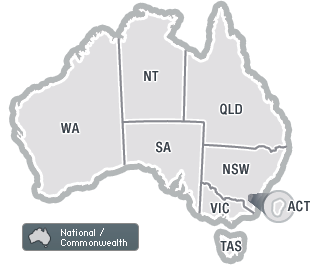Safe Work Australia has confirmed it will almost certainly dump the model Code of Practice on workplace bullying in favour of a guide, but prominent safety lawyer Barry Sherriff notes that under the WHS Act, a guide has a similar evidentiary status, in practice, as a Code.
An SWA spokesperson told OHS Alert yesterday that many submissions received during the public comment period for the second draft bullying Code called for the Code to be replaced by a guide.
Master Builders Australia, for example, submitted that as there were "complex and varied ways bullying can manifest itself, there cannot be certain preferred or recommended methods to achieve compliance with the duties imposed by the model WHS legislation - a basic consideration for a Code of Practice" (see related article).
The spokesperson said an SWA advisory group assessed the submissions and "decided by majority to recommend to members the material should be finalised as a guide instead of a Code of Practice".
A new draft guide to preventing and responding to workplace bullying, as well as the draft bullying guide for workers, will be considered by SWA members at their next meeting on 14 November, she said.
The difference between Codes and guidance
Sherriff, a member of the 2008 harmonisation review panel and a Norton Rose Fulbright partner, told OHS Alert that one of the key practical differences between a Code and a guide is the structure and wording.
A Code is "developed through a tripartite process with a lot of expertise applied, endorsed at the Safe Work Australia Council level, approved in the relevant jurisdiction by the minister under the Act, and [published] on the regulator's website", he said.
"It has a lofty status, simply because no one can deny they should have known about it."
Guidance "tends to have a chattier kind of style" and is likely to provide a broader range of options and recommendations, but is developed in a similar way to a Code.
The main legal difference is that a guide isn't required to be "subject to the same legal processes or ministerial approval".
"In an area as controversial as bullying, a guide may well be preferable to a Code for these reasons."
According to Sherriff, many people don't realise that the status of a Code under the model WHS Act is "quite different to what it was under the old legislation", where entities were deemed to comply with the Act if they adhered to the Code.
"This promoted slavish adherence to a Code, whether it was right or not and whether or not it was all encompassing," he said. (Sherriff discusses this issue further here.)
This discouraged duty holders from "thinking outside the square", he said.
Under the harmonised laws, "a Code is, but is no more than, evidence on which a court can rely in determining what is reasonably practicable", Sherriff said.
"That is, what was known about hazards, risks or control measures."
A model Code "does not mandate a specific action unless it is required by the Act or a regulation".
From an "evidentiary perspective", there is "no or little difference" between a Code and a guide, with both reflecting known hazards, risks and controls.
Sherriff recommends that employers use guides and Codes - to the extent that is appropriate - as tools "to guide the development of the business-specific response" to a risk or hazard.



